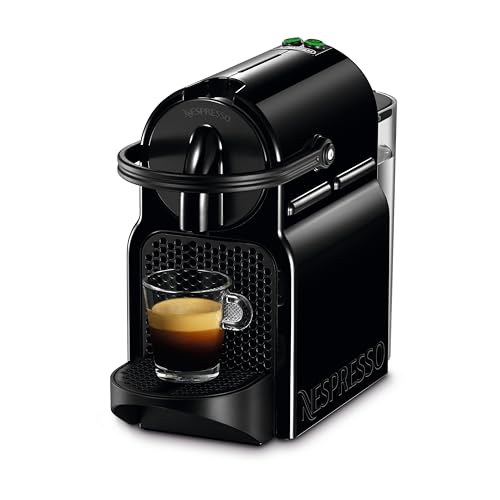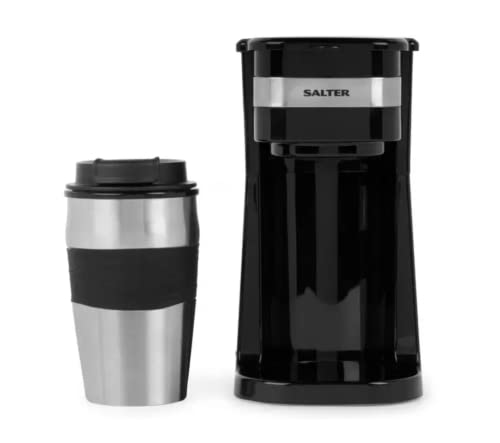Why Is There All This Fuss About Machine Coffee?
페이지 정보

본문
 Coffee machines make it easy to enjoy a cup of coffee at home. Many of the most well-known models come with a programmable clock and even a built in grinder.
Coffee machines make it easy to enjoy a cup of coffee at home. Many of the most well-known models come with a programmable clock and even a built in grinder. Sensors regulate the heating element that is circling around a warming plate every time you switch on the power. It also includes a water tube made of aluminum that runs through it.
Sensors regulate the heating element that is circling around a warming plate every time you switch on the power. It also includes a water tube made of aluminum that runs through it.Cold-Water Tube
A machine coffee maker takes the water you pour into it and transforms it into a cup of coffee. This is done by boiling water and pushing it through a mechanism that produces high pressure. These machines can operate up to 15 bar of pressure in comparison to coffee percolators, which only work at one bar.
There is a reservoir at the bottom of your machine. It appears like a bucket and holds the water used to make your drink. The reservoir has a hole at the bottom that connects on one side to the tube that is inside the heating element and, on the other hand, to an white tube with an insulation that extends from the bottom of the machine to the faucet.
When you turn on the machine and turn it on, the reservoir of water is transferred to the heating chamber. The thermostat then tells the machine to heat up. As the water heats, it expands. This pushes a screen under a portafilter that is filled with espresso and was tamped. The pressure causes the screen to pierce the filter, allowing the espresso to enter the mug.
The espresso that comes from your machine is a delicious and rich brew. It may have different levels of acidity, depending on the kind of beans you select. If you notice that your coffee has a sour taste try switching to another filter paper or a more coarsely ground coffee. If the issue continues you should make an appointment with an authorized service technician for a de-liming cycle to clean out your machine. The problem is usually caused by lime scale.
Hot-Water Tube
The white tube with insulation at the bottom of your machine is called the hot-water tubing. It transfers the hot water from the heating chamber to the faucet on the top of your coffee maker. The water is saturating your grounds, bringing their flavors into the cup of coffee you are waiting for.
Some coffee makers have a feature that keeps the water warm, so that it's ready the moment you wake up. This is achieved by using a heater to produce a small amount of steam. The steam is then directed to the spout so that your coffee machine for home remains warm until you are ready to pour it.
Although it could appear that a coffee machine is expensive and complicated The majority of models are easy to use and have only a few moving parts. Regular cleaning and maintenance will keep your machine in top condition for many years.
A majority of coffee machines have an integrated coffee grinder that lets you grind the coffee, lock the portafilter in place, and then activate the switch to start the coffee brewing. The pump will pressurize heated water until it reaches 220 psi pressure when the switch is turned.
The need to constantly refill the reservoir is among the most annoying aspects of making coffee. Some manufacturers have created coffee machines that can connect directly to the water line. This allows you to skip the reservoir. There are kits available for those who want to make the switch themselves. They can transform any machine into one that connects directly to a household water line. This process is a little more complex and requires drilling holes into your machine to accommodate an adapter. This could weaken the structure of your coffee machines cheap maker and lead to cracking around the drilled areas. It's recommended that you purchase a specially-built in coffee machine coffee maker that is specifically designed to accept an open water line to get the best results.
Resistive Heat Element
The heater is a piece metal that exhibits a particular kind of electrical resistance. It impedes the flow of electricity without stopping it completely. In addition, some energy is transformed into heat. This is what causes the heating of the water inside the boiler of your coffee maker.
The heating element is located on the left side of the base of your machine and it looks like a light bulb filament or the component in your electric toaster. It is made up of an aluminum extrusion split into two sections with a tube that is used that allows water to flow through and a resistive element. (Watch video here). This coiled wire heats up because of the resistance it has.
When you switch on your coffee maker, the element begins heating the aluminum water tube until it begins to boil. The bubbles will rise through the white tube and then be sprayed over your ground coffee with the shower head. The water sprayed gets the essential oil essence of the ground coffee beans while it travels down and it also has caffeine.
If your coffee maker is not release hot water, it's likely that the heating element or pressure switch thermostat is not working properly. You can test both by using a multi-meter to perform the continuity test. You connect one pole to the electrical connection and the other to the flange body and it should show an amount that is less than 1. If there is no reading then it is a sign that the switch or thermostat needs to be replaced.
The other main part of your coffee machine that could be the source of problems is the water pump, or reservoir. It is prone to getting clogged with lime and that's the reason you should run a mixture of water and descaling solution through it.
Warming Plate
A warming plate is a heated metal surface which keeps the coffee warm after it has been made. This coffee making machine (continue reading this..) maker feature is very popular with people who love to eat out and is a great addition to any home kitchen. The warming plate can get rusty and ruin the taste, so it is important to clean it regularly. Cleaning a coffee maker heating surface is best done using the combination of oxalic and water.
Oxalic acid is a potent cleaning agent that can be used to get rid of rust from pipes, sinks, gas stove burners, and many other household items. It is a highly effective method of cleaning the rusty warming plate in your coffee maker, and is available at most hardware stores. You should always be careful when using this product as it can cause burns and other injuries if handled correctly.
If you are planning to clean a rusted coffee maker heating plate first, ensure that the coffee maker is disconnected. This will avoid any damage caused by the heat of the cleaning products. It is also recommended to wear rubber gloves, as the oxalic acid can be very harsh on your skin.
Then then, sprinkle some white vinegar over the rusty area of the coffee maker heating plate. It will react chemically with baking soda and dissolving the rust. Finally clean the area using an abrasive or rag until it is clean. If your coffee maker is extremely rusted, you may need to repeat the process a few times to make sure it is completely clean. Be sure to wait until the oxalic acids have totally evaporated before plugging the coffee maker in again.
Aluminum Water Tube
When you switch on your machine, it will begin making coffee for you. It appears to be something that is easy enough, but there is lots going on the machine to transform just a few scoops of ground and a few cups of water into a steaming hot drink.
First, the cold water goes in through an opening in the reservoir's bottom and into the aluminum tube beneath the resistive heating element. The aluminum water tube begins to heat up, and when it reaches its boiling point, bubbles begin to form that push the water partway up the white tube in the center of your coffee maker.
The hot water squirts from the top of this tube and then into a perforated plastic disc, which is known as the shower head (or basket in certain machines). Here, the hot water is sprayed on the coffee grounds, absorbing its oil essence.
The water then flows over the coffee, and through the filter back into the pot. The pump's oscillating force is responsible for this. The contraction and expansion of the bubble boundaries creates a shearing force that extracts coffee particles from water, leaving a strong espresso-like beverage behind.
It is crucial to keep in mind that your machine relies on a number prices of coffee machines different components, and all of them are interconnected. If you experience strange noises or feel vibrations it could be due to a loose part. Loose components can create noise and weaken connections. This could lead to further problems.
- 이전글The Advanced Guide To Private Psychiatrist London 24.12.17
- 다음글Рост спроса на запчасти для сельхозтехники в РФ 24.12.17
댓글목록
등록된 댓글이 없습니다.


 블로그체험단 바로가기
블로그체험단 바로가기